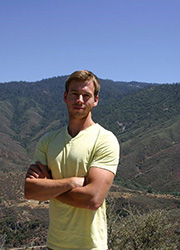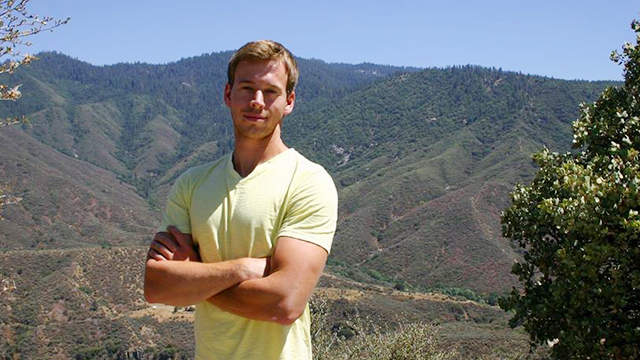Mapping the Natural World
Jared O’Brien
Class of 2013
Assistant Curator of Oaks
Taltree Arboretum and Gardens
Valparaiso, Ind.
Jared O’Brien works at Taltree Arboretum and Gardens, a 360-acre nature preserve outside of Valparaiso. Officially, Jared’s title is Assistant Curator of Oaks, and he does manage the 112 oak species that are in the living collection. On the side, Jared also serves as the organization’s expert in geographic information systems (GIS).
Using GIS software, Jared can map the arboretum’s trees in dozens of ways, or create exact maps of the hiking trails, or encode information about which prairies were intentionally burned and when. The skill is critical for his role at the nature preserve, with so much land to manage and so much data potentially available.
“It’s an elaborate position,” Jared says. “Without taking GIS classes at Valpo, I could not have assumed that role.”
Jared took classes in GIS beginning his first semester at Valpo, when he transferred in as a junior. By the spring of that year, Jared was enrolled in Advanced Geographic Information Systems and planning for an internship at Taltree.
“In my internship, I had the opportunity to work with real data in the field, not just the sample datasets in the lab. I was out on the ground referencing the information,” Jared says. In addition to hands-on conservation work, he conducted an inventory of the oak and hickory woodland — identifying and measuring individual trees — and mapped several features of the arboretum grounds. His maps were showcased in grant proposals and on a new trail map for visitors.
The synergy of classroom learning and work experience continued into his senior year, working for Taltree while taking his final courses for majors in environmental science and geography.
Jared looks back at that year and particularly remembers two courses at the intersection of life sciences and spatial relationships. Biogeography allowed Jared to ponder why certain species are distributed geographically the way they are and how those species differ across their natural ranges. At the same time, in an independent study, he and two fellow students were using satellite data and on-the-ground measurements to create accurate maps of the habitat types in a section of the Indiana Dunes National Lakeshore.
Jared sees these courses influencing his work today: he has a penchant for researching oak species from around the world, and he has taken pains to map the habitats and vegetation zones of Taltree’s conservation areas.
These skills are part of what drew Taltree’s management to hire Jared in a full-time position after he graduated. Though he says having GIS experience made him very marketable to many employers, he chose to come back to Taltree because of the organization’s mission and his ability to contribute.
“Mapping is all-encompassing. GIS can be used for a wide variety of applications, from managing restoration areas, right down to mapping the attributes of individual trees. It’s a way to take inventory, to take stock of everything,” Jared says. “These efforts at a local scale reach beyond the region by contributing to the conservation and restoration of ecological areas and ultimately the preservation of the oak species worldwide.”
Jared says he truly feels that he is making a difference. He is now working to hire interns from Valpo to join him in this work.

